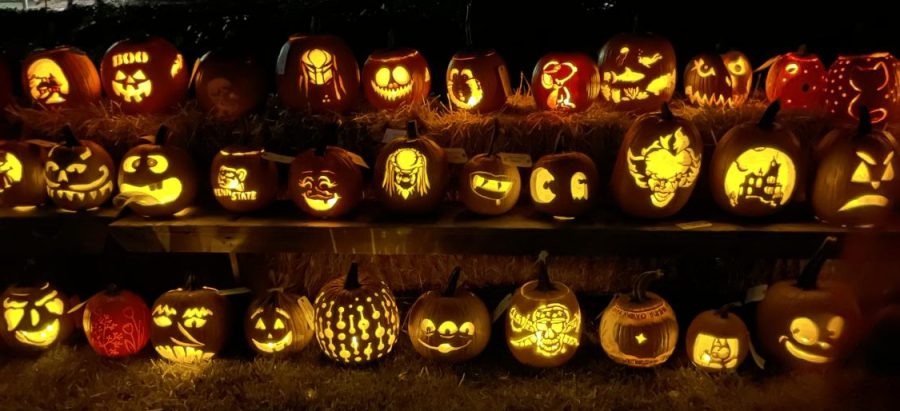History of Halloween and Why We Celebrate It
October 31, 2022
As the leaves begin to change color and the temperature starts to drop, the holiday season can be seen just around the corner. Autumn is marked by two major holidays: Thanksgiving and Halloween.
Halloween is celebrated on Oct. 31 internationally. Is is full of children dawning costumes to go “trick-or-treating”, a tradition originating in the early 1940s. While modern practices of Halloween are relatively new, traces of Halloween can be seen 2500 years back in the Gaelic festival of Samhain (pronounced Sah-win).
Mrs. Shawley, World Religions teacher at State High, has studied religious holidays and practices and was able to give insight into the background behind Samhain and Halloween. She commented on the concentration of holidays within Autumn and the transition of the dead.
“[Traditions] began with the Celts and Druids offering sacrifices to their deities, which often included bonfires and costumes,” Shawley said. “believing that the lines of the living and the dead were ‘blurred’ for a night.”
Though officially celebrated on Nov. 1, festivities begin on the night before. Samhain symbolizes the end of the autumn harvest where participants sing, dance, feast, and pray for the dead.
Christian ties wouldn’t be seen until the 7th century with Pope Boniface IV. Boniface IV originally created the holiday “All Saints’ Day”, designating it to be on May 13th. In the 8th century, Pope Gregory III moved it to November 1 and denoted it a Christian holiday. All Saints’ Day would continue to change into what it is today with cultural blending and immigration.
“All Saints’ Day and All Souls’ Day began to merge with these Celtic traditions as people moved from place to place,” Shawley noted, “Then when Europeans immigrated to America, their festivities followed. Soon, the rituals included parties, ghost stories, and tricks. It wasn’t until around 1950 that consumerism began to capitalize on costumes, candy, and harvest-themed decorations.”
Trick-or-Treating wouldn’t be as prominent as we see it in the 21st century without such “1950s consumerism”. Door-to-door traditions were widely practiced, with things like toys, mixed nuts, and fruits being commonly traded. Then, in the mid-20th century, the candy market realized what it could profit from and began selling individually wrapped candies, changing door-to-door traditions to Trick-or-Treating.
Holidays like Halloween are important to celebrate, but it is even more important for people to actively learn about the origins of holidays and why groups celebrate them.
“Holidays, festivals, celebrations all give people an opportunity to gather around what is important to them—whether it’s rooted in religion, culture, ethnicity, or any other meaningful sense of identification—it provides shared experiences,” Shawley said.
It is projected that nearly 70% of people in the US (~235 Million) plan to celebrate Halloween in 2022. Senior Ireland McDyre is planning to celebrate Halloween and finds a different meaning to it, outside of its history.
“I celebrate Halloween because of the nostalgia it brings me but also because I know a lot of people around me enjoy celebrating Halloween, I like to celebrate with them,” McDyre said, “I think other people celebrate [Halloween] because it gives them the freedom to feel like a kid again and to express themselves through a costume. Some people probably enjoy being scared and scary things, so they embrace those types of traditions surrounding Halloween.”
Halloween, among other holidays, is a way of expressing and celebrating one’s identity and culture. Halloween allows people to be themselves and to come together to celebrate one another. This October, think back to the past and be true to the spirit of Halloween.



